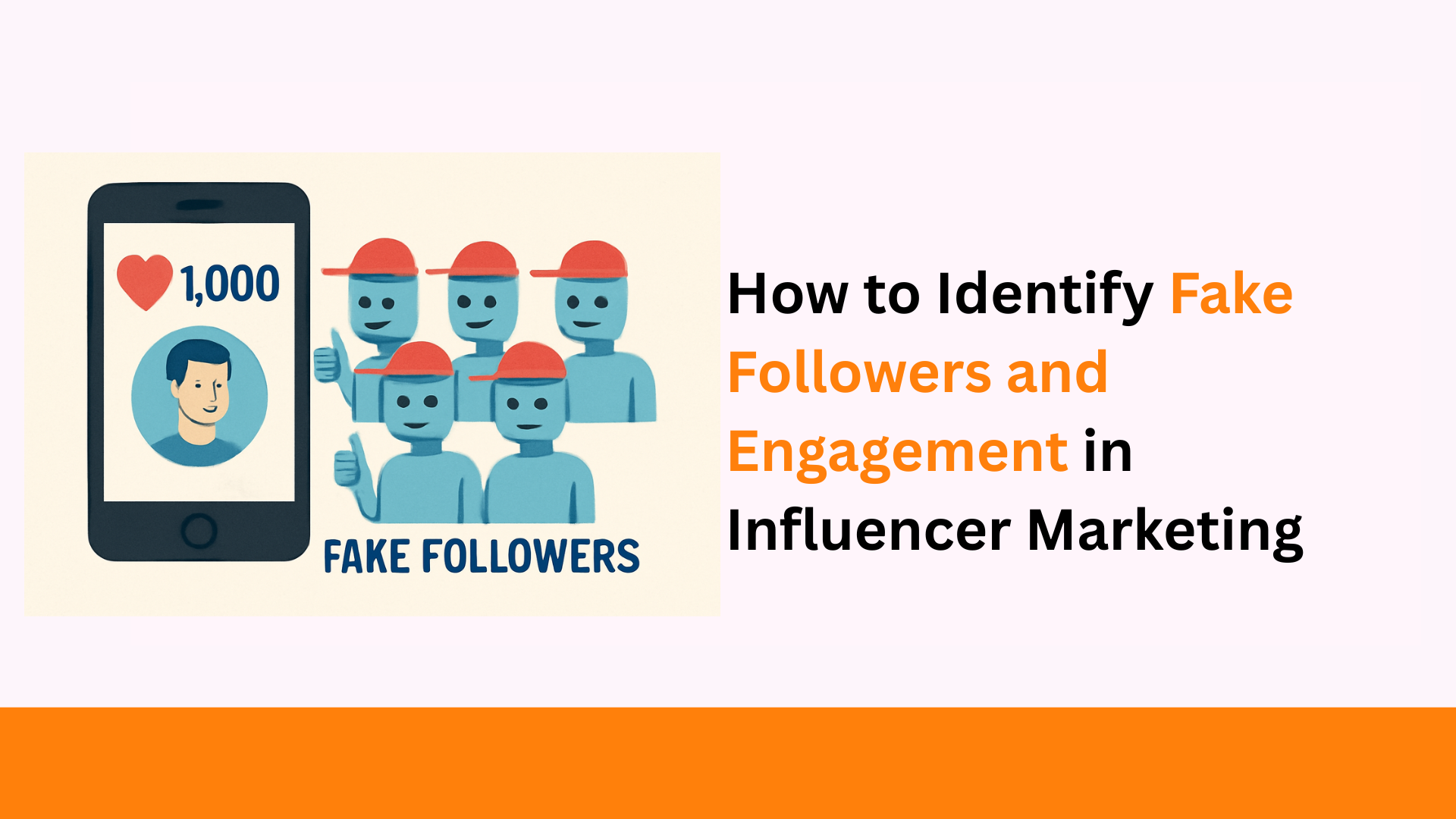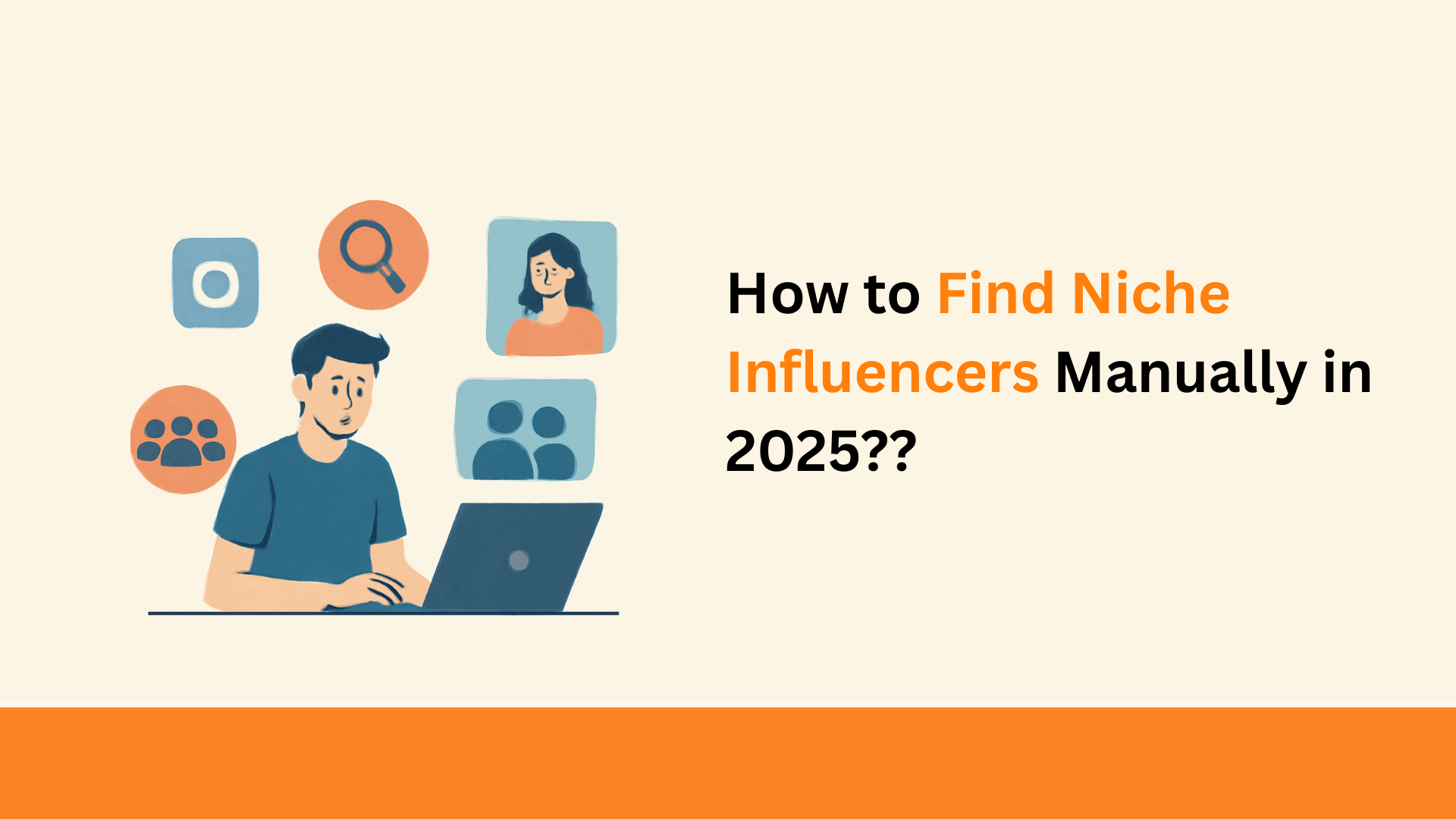TLDR
- Fake followers include bots, inactive accounts, and purchased followers that artificially inflate influencer metrics
- Inauthentic engagement severely impacts campaign ROI, with brands wasting up to 15% of influencer marketing budgets on fake metrics
- Red flags include sudden follower spikes, mismatched engagement rates, and generic/irrelevant comments
- Detection tools like Qoruz’s Authenticity Score help marketers verify creator credibility before campaigns go live
- Regular authenticity audits should be integrated into your influencer marketing strategy to ensure maximum campaign performance
What Are Fake Followers and Engagement?
In 2023, brands worldwide lost an estimated ₹7,500 crore to fake influencer engagement. This staggering figure highlights a growing challenge in the creator economy: distinguishing authentic influence from artificially inflated metrics.
Fake followers aren’t just numbers—they represent a fundamental threat to marketing effectiveness. These inauthentic accounts typically fall into three categories:
- Bot accounts: Automated profiles created solely to inflate follower counts
- Purchased followers: Real but inactive accounts sold in bulk packages (often from click farms)
- Ghost followers: Dormant accounts that never engage with content
Similarly, fake engagement manifests as:
- Mass-produced generic comments (“Great post!” or random emoji strings)
- Engagement pods where influencers artificially boost each other’s content
- Purchased likes/comments from services promising “instant engagement”
- Comment bots that leave contextually irrelevant responses
According to a 2023 Cheq study, approximately 15% of all influencer followers are inauthentic, meaning that for every ₹100,000 spent on influencer marketing, about ₹15,000 goes to waste targeting non-existent audiences.
For brands focused on meaningful brand mentions and authentic consumer connections, this poses a significant challenge. Detecting these deceptive practices requires both technological solutions and human oversight within a comprehensive influencer marketing strategy.
Why Fake Engagement Hurts Your Campaign
The consequences of partnering with inauthentic influencers extend far beyond wasted budgets:
Skewed ROI Calculations
When performance metrics are artificially inflated, true ROI becomes impossible to calculate. A campaign might appear successful based on vanity metrics while delivering zero actual business impact.
A 2023 Linqia study found campaigns with authentic influencers delivered 3.7x higher conversion rates than those with engagement anomalies, even when surface-level metrics looked similar.
Damaged Brand Reputation
Association with fraudulent influencers can significantly harm brand perception. When consumers notice a disconnect between an influencer’s claimed influence and visible engagement, it reflects poorly on partner brands.
According to a Kantar study, 73% of Indian consumers reported decreased trust in brands they discovered through influencers later revealed to have fake followers.
Misaligned Targeting
Perhaps the most damaging thing is the audience mismatch that occurs with fake followers. Even with impressive reach numbers, if those followers don’t match your target demographic (or worse, don’t exist at all), your message reaches no one who matters.
The disconnect becomes particularly obvious when analyzing sentiments across campaigns. Authentic influencer partnerships generate meaningful conversation and genuine emotional responses, while inauthentic ones produce superficial engagement with little lasting impact.
Red Flags to Watch Out For
Detecting fake engagement doesn’t require advanced technical skills—just a trained eye for these common warning signs:
Suspicious Growth Patterns
- Sudden follower spikes: Organic growth follows consistent patterns; 5,000+ new followers overnight usually indicates purchased followers
- Step-like growth charts: Authentic accounts show gradual growth; fake ones display dramatic, unnatural jumps
- Follower plateaus followed by drops: Many platforms purge bot accounts periodically, causing dramatic follower decreases
Engagement Inconsistencies
- Engagement rate mismatch: The average engagement rate for Indian Instagram influencers is 2-3%; rates significantly higher or lower than niche averages warrant investigation
- Comment-to-follower disparity: A creator with 100,000 followers consistently receiving only 5-10 comments signals potential follower inflation
- Like-to-view imbalance: Videos with high like counts but disproportionately low views often indicate purchased engagement
Audience Quality Issues
- Mismatched geography: When a Hindi-speaking creator focused on Indian content has 40% followers from Turkey or Brazil, that’s a major red flag
- Empty profiles: Authentic followers typically have profile pictures and some activity; large percentages of blank/minimal profiles suggest bots
- Suspicious usernames: Clusters of followers with usernames following patterns like “name123456” often indicate fake accounts
Content Engagement Patterns
- Generic comments: Excessive one-word responses or emoji-only comments without context
- Irrelevant responses: Comments that don’t relate to the actual content (praising outfit choices on food posts)
- Time-clustered engagement: Authentic engagement spreads naturally over time; 90% of likes appearing within 10 minutes suggests manipulation
Using an influencer marketing platform can help systematically check for these warning signs before committing to creator partnerships.
Tools to Detect Fake Followers and Engagement
Modern technology offers powerful solutions for authenticating influencer metrics:
- Qoruz Fake Followers Checker
What it checks: Comprehensive analysis examining follower quality, engagement patterns, and audience demographics across multiple platforms
Ideal for: Brands running multi-platform campaigns requiring detailed authenticity verification
Unique feature: AI-powered anomaly detection that spots unusual engagement patterns invisible to manual checks
Price range: Free to use
- HypeAuditor
What it checks: Follower authenticity, audience quality, and engagement metrics
Ideal for: Single-platform deep dives, particularly for Instagram verification
Unique feature: Historical data showing engagement pattern changes over time
- Modash
What it checks: Authenticity scores across Instagram, TikTok, and YouTube
Ideal for: Cross-platform verification with demographic insights
Unique feature: Competitor comparison feature showing authenticity benchmarks
- Upfluence
What it checks: Engagement, authenticity, and audience credibility metrics
Ideal for: Enterprise-level campaigns with extensive influencer rosters
Unique feature: Fraud detection algorithm focusing on engagement velocity patterns
- IG Audit (Basic Option)
What it checks: Simple follower authenticity checking for Instagram
Ideal for: Small businesses conducting preliminary influencer checks
Unique feature: Free basic assessment to identify obvious red flags
Many brands integrate influencer marketing software directly into their workflow, allowing for continuous monitoring of creator authenticity throughout campaigns rather than one-time verification.
Real Influencer vs Fake: A Quick Comparison
Understanding the difference between authentic and inauthentic influencers becomes clearer when viewed side-by-side:
| Factor | Authentic Creator | Inauthentic Creator |
| Follower Growth | Steady, organic growth with occasional mild spikes tied to viral content | Dramatic jumps followed by plateaus or losses; growth patterns defy platform norms |
| Comments | Contextual responses relating to content, varied lengths and styles, and genuine questions | Generic praise, emoji-only responses, irrelevant to content, repetitive patterns |
| Engagement Rate | Consistent with platform and niche benchmarks (2-3% for Instagram) | Suspiciously high (10%+ without justification) or extremely low compared to similar creators |
| Audience Demographics | Aligned with the content niche and the creator’s primary language/location | Random geographic distribution, mismatched language regions, and suspicious clustering |
| Video Performance | Views, likes, and comments form consistent ratios | Extremely high likes but minimal views; comment sentiment disconnected from content |
| Brand Collaborations | Authentic integration with genuine product experiences | Overly promotional; identical messaging across competing brands; lacks personal perspective |
This comparison highlights how genuine influencers build communities through consistent, authentic engagement patterns that remain relatively stable across platforms and content types.
Real-World Case Study: Fashion Influencer Authentication
Consider this analysis of two seemingly similar fashion influencers:
Influencer A:
- 150,000 followers with steady growth of 500-1,000 weekly
- 2.8% engagement rate consistent across posts
- Comments show varied lengths, personal questions, and genuine fashion discussions
- 92% Indian audience matching their Hindi/English content focus
- Video view-to-like ratio consistently around 5:1
Influencer B:
- 180,000 followers with a recent jump of 30,000 in one week
- Fluctuating engagement rate between 0.8% and 8.5% with no content justification
- Comments are primarily short phrases and emoji strings
- Audience distribution: 40% India, 25% Turkey, 15% Brazil, despite Hindi content
- Video view-to-like ratio varies dramatically, sometimes showing more likes than views
Despite similar follower counts, Influencer A shows authentic engagement patterns while Influencer B displays multiple red flags suggesting purchased followers and manipulated engagement.
Protecting Your Brand: Implementation Strategy
Building a robust defense against influencer fraud requires a systematic approach that extends beyond basic verification. Here’s a comprehensive strategy to protect your brand:
1. Develop a Tiered Authentication Framework
Create a multi-level verification system based on campaign importance and investment:
- Level 1 (Basic Screening): Apply quick authenticity checks to all potential influencers during the initial discovery phase
- Level 2 (Standard Verification): Conduct a thorough analysis for shortlisted creators using specialized tools
- Level 3 (Advanced Authentication): Implement comprehensive verification, including historical performance analysis and audience quality assessment for high-investment partnerships
This tiered approach ensures appropriate resources are allocated based on potential campaign impact.
2. Implement Technical Safeguards
Beyond verification tools, adopt these technical protective measures:
- Custom UTM Parameters: Create unique tracking links for each influencer to validate traffic authenticity
- Promo Code Analysis: Assign individual discount codes to track real conversion patterns
- Engagement Quality Scoring: Develop an internal system to rate comment quality beyond basic metrics
- Platform-Specific Verification: Apply different authentication standards for Instagram, YouTube, and emerging platforms like Moj or Josh
A 2023 study by the Indian Society of Advertisers found that brands using multi-platform verification detected 22% more fraudulent activity than those relying on single-platform checks.
3. Build Legal Protection
Strengthen your contracts with specific clauses addressing authenticity:
- Authenticity Warranties: Require influencers to warrant their follower authenticity
- Audit Rights: Reserve the right to conduct authenticity audits at any point during campaigns
- Conditional Payment Structures: Tie compensation to verified, authentic engagement metrics
- Fraud Remedies: Outline specific consequences for discovered fraud, including payment recovery
- Disclosure Requirements: Mandate proper disclosure of prior engagement enhancement practices
Leading Indian agencies report that explicit authenticity clauses have reduced fraudulent partnerships by up to 35% through preventative deterrence.
4. Establish Ongoing Monitoring Protocols
Authentication isn’t a one-time event—implement continuous verification:
- Pre-Campaign Baseline: Document authenticity metrics before launch for comparison
- Mid-Campaign Checks: Monitor for sudden engagement pattern changes during active campaigns
- Post-Campaign Analysis: Compare performance metrics against authenticity indicators
- Automated Alerts: Configure detection tools to flag suspicious activity in real-time
- Quarterly Creator Audits: Regularly review your influencer roster for emerging authenticity issues
Brands implementing continuous monitoring protocols report identifying problematic influencers an average of 45 days earlier than those using periodic checks.
5. Train Your Team on Detection
Develop internal expertise through:
- Red Flag Recognition: Train marketing teams to spot common indicators of fake engagement
- Platform-Specific Training: Ensure team members understand how fraud manifests differently across social platforms
- Case Study Reviews: Analyze previous fraud incidents to identify patterns
- Benchmark Education: Teach proper use of industry engagement rate benchmarks specific to Indian markets and verticals
According to the Digital Marketing Association of India, teams with formal fraud detection training identify 3x more suspicious accounts than untrained teams.
6. Create a Verification-Focused Creator Brief
Set expectations upfront with influencers by:
- Stating Verification Methods: Inform creators which authentication tools you’ll use
- Outlining Expectations: Clearly communicate acceptable engagement patterns
- Encouraging Disclosure: Ask influencers to voluntarily disclose any previous engagement enhancement
- Promoting Authenticity: Position genuine metrics as a core value of your partnership approach
This transparent approach not only deters potential bad actors but also attracts authentic creators who value genuine engagement.
Conclusion: Authenticity as a Competitive Advantage
In an industry plagued by inauthenticity, brands that prioritize verification gain significant competitive advantages:
- Higher ROI: Resources directed exclusively toward genuine engagement deliver measurably better results
- Brand Safety: Avoiding association with fraudulent practices protects reputation
- True Connections: Authentic creators build genuine relationships with audiences that translate to stronger brand affinity
- Performance Predictability: Verified metrics enable more accurate forecasting and campaign planning
As India’s influencer marketing spend continues its projected 25% annual growth through 2025, the brands that thrive will be those that implement rigorous authenticity verification as a foundational element of their strategy.
By combining technological solutions with human oversight and consistent verification processes, marketers can navigate the complex landscape of influencer authenticity with confidence, ensuring every rupee invested generates genuine impact with real audiences.
FAQs
- What are fake followers in influencer marketing?
Fake followers are inauthentic accounts (bots, purchased profiles, or inactive users) that artificially inflate an influencer’s audience size, creating a misleading impression of their actual reach and impact.
- How do I detect fake engagement?
Look for unusual follower growth spikes, engagement rates inconsistent with benchmarks, generic comments, mismatched audience demographics, and suspicious engagement timing patterns. Tools like Qoruz can automate this detection.
- Are giveaways a sign of fake engagement?
While legitimate marketing tactics, excessive reliance on back-to-back giveaways or “loop giveaways” requiring users to follow multiple unrelated accounts can indicate artificial engagement generation practices.
- What is a safe engagement rate?
Safe rates vary by platform and niche—typically 1-3% for Instagram accounts with 100K+ followers and 3-6% for smaller accounts. TikTok shows higher rates between 5% and 15%. Consistency across posts is key.
- Which tools help detect fake followers?
Reliable tools include Qoruz (comprehensive cross-platform verification), HypeAuditor (Instagram analysis), Modash (demographic insights), Upfluence (engagement velocity tracking), and free options like IG Audit for basic checks.



